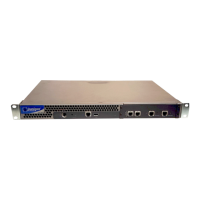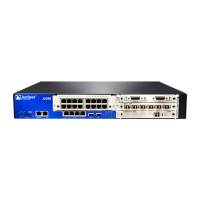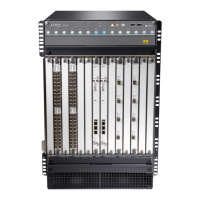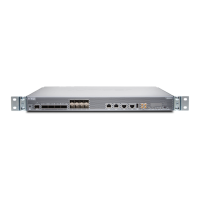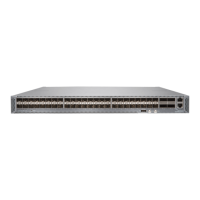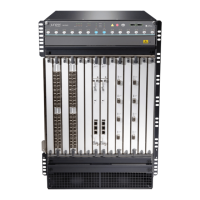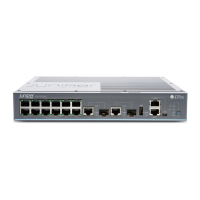NOTE: The only difference in the two commands is the use of the
mep-statistics and delay-statistics keyword.
The fields for these commands are described in Table 4 on page 125.
Table 4: Show Ethernet Delay Command Parameters
DescriptionParameter RangeParameter
Specifies an existing maintenance domain (MD) to use.Existing MD namemaintenance-domain name
Specifies an existing maintenance association (MA) identifier
to use.
Existing MA identifiermaintenance-association ma-id
When a MEP has been specified, display statistics only for the
local MEP.
1–8191local-mep identifier
When a MEP has been specified, display statistics only for the
discovered MEP.
1–8191remote-mep identifier
The number of entries to display in the results table. By default,
all 100 entries are displayed if they exist.
1–100 (default:100)count count
NOTE: For each MEP, you will see frame counters for sent and received
Ethernet frame delay measurement frames whenever MEP statistics are
displayed.
Related
Documentation
Ethernet OAM•
• Ethernet Frame Delay Measurements on page 119
• Configuring MEP Interfaces to Support ETH-DM on page 122
• Triggering an ETH-DM Session on page 123
• Configuring One-Way ETH-DM with Single-Tagged Interfaces on page 125
• Configuring Two-Way ETH-DM with Single-Tagged Interfaces on page 130
• Configuring ETH-DM with Untagged Interfaces on page 134
Example: Configuring One-Way Ethernet Frame Delay Measurements with
Single-Tagged Interfaces
This example uses two MX Series routers: MX-1 and MX-2. The configuration creates a
CFM down MEP session on a VLAN-tagged logical interface connecting the two (ge-5/2/9
on Router MX-1 and ge-0/2/5 on Router MX-2).
125Copyright © 2012, Juniper Networks, Inc.
Chapter 11: ITU-T Y.1731 Ethernet Frame Delay Measurements
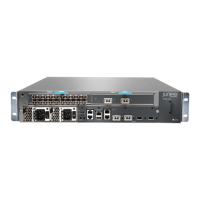
